Grading Franklin half dollars involves assessing condition on a 1-70 scale using four key factors: luster (original mint shine), contact marks (scratches and nicks), striking quality (detail sharpness), and toning (natural surface color). The most valuable designation is Full Bell Lines (FBL), requiring complete, separated horizontal lines at the Liberty Bell’s base on the reverse. Uncirculated coins retain original luster and show no wear on high points like Franklin’s chin and hair. Proof coins feature special mirrored backgrounds, with Deep Cameo varieties being most rare. FBL designation significantly increases value compared to non-FBL coins of the same date and grade. Use magnification to check bell detail for accurate grading.
Whether you’ve inherited a coin collection or stumbled upon a Franklin Half Dollar in an old drawer, understanding how to properly grade this iconic American coin could mean the difference between a $15 piece and a $15,000 treasure. The Franklin Half Dollar, minted from 1948 to 1963, remains one of the most collected silver coins in United States history—and grading accuracy directly impacts your coin’s marketability and value.
Understanding the Sheldon Scale for Franklin Half Dollars
The Sheldon Scale forms the backbone of modern coin grading, ranging from 1 (barely identifiable) to 70 (absolutely flawless). For Franklin Half Dollars, this numerical system becomes particularly important because small grade differences translate to significant value gaps.
A 1963-D Franklin Half Dollar graded About Uncirculated 58 (AU-58) might fetch around $18-22, while the same coin graded Mint State 65 (MS-65) commands $45-65. Jump to MS-67, and you’re looking at $250-400. The progression isn’t linear—it accelerates dramatically at higher grades.
Professional grading services like the Numismatic Guaranty Company (NGC) and Professional Coin Grading Service (PCGS) use this scale with remarkable consistency. They examine coins under controlled lighting and magnification, assigning grades based on specific criteria that you can learn to evaluate yourself.
The Four Essential Grading Factors
Surface Preservation and Contact Marks
Contact marks—those tiny scratches, nicks, and abrasions—tell the story of a coin’s journey through commerce. Every time a Franklin Half Dollar clinked against other coins or touched surfaces, it collected evidence of its circulation.
When examining your coin, scan both the obverse (Franklin’s portrait side) and reverse (Liberty Bell side) systematically. Use a 5x to 10x magnifying glass under bright, indirect lighting. The cheek area below Franklin’s eye is particularly revealing—it’s a large, flat surface where even minor contact marks become visible.
For Mint State grades (MS-60 to MS-70), the number and severity of contact marks directly determine the numerical grade. An MS-63 Franklin typically shows numerous small contact marks visible to the naked eye, with several more noticeable marks in prime focal areas. An MS-65 displays only minor marks, mostly requiring magnification to detect. MS-67 and higher coins show virtually no imperfections, even under 10x magnification.
Circulated grades (Good-4 through About Uncirculated-58) focus less on individual marks and more on overall wear patterns. A Fine-12 Franklin shows moderate, even wear across all high points. An Extremely Fine-40 displays light wear on Franklin’s hair details and cheekbone, with about 95% of the original mint luster remaining in protected areas.
Luster: The Mint’s Original Signature
Luster refers to the way light reflects off a coin’s surface—the characteristic cartwheel effect created when dies strike a blank planchet. Original mint luster is your primary indicator for distinguishing uncirculated coins from circulated ones.
Hold your Franklin Half Dollar at an angle under a direct light source and rotate it slowly. Uncirculated coins display a vibrant, rotating band of light that sweeps across the surface—this is the cartwheel effect. The metal flows during striking, creating tiny radial lines from the center outward that catch and reflect light distinctively.
Circulated Franklin Half Dollars show disrupted or completely absent luster. Even brief circulation dulls this characteristic shine. An AU-58 coin retains perhaps 90% of its original luster, with slight disruption only on the highest points—Franklin’s cheekbone and hair curls, and the bell clapper on the reverse.
Different mint facilities produced Franklin Half Dollars with varying luster characteristics. Philadelphia strikes typically show semi-prooflike surfaces with deeper luster. Denver issues often display a satiny, softer luster. San Francisco business strikes (1949-S through 1954-S) frequently exhibit a slightly duller, grainier luster even when fully uncirculated—a crucial consideration when grading these dates.
Strike Quality: When Minting Pressure Matters
Strike quality describes how completely the dies transferred their design onto the planchet. This factor becomes critical when grading Franklin Half Dollars because striking weakness was endemic to this series, particularly from the San Francisco Mint.
The Liberty Bell’s center vertical line serves as a primary strike indicator. On fully struck coins, this line appears sharp and complete from top to bottom. Weakly struck examples show a mushy or incomplete line, even on otherwise high-grade pieces. Similarly, examine Franklin’s hair details behind his ear—well-struck coins show distinct, separated hair strands, while weak strikes display softness and blending.
Here’s where grading becomes nuanced: a weakly struck coin in pristine condition (no marks, full luster) might grade MS-65 based on surface preservation but trade at MS-63 prices due to strike deficiency. Collectors and dealers adjust values based on this factor, especially for dates known to have striking issues.
San Francisco issues from 1949 to 1955 present particular challenges. These coins routinely show weak strikes, especially at the bell’s center and Franklin’s hair details. Even Gem examples (MS-65 and higher) often display incomplete strikes. When grading these dates, compare strike quality against other coins from the same mint and year, not against better-struck Philadelphia or Denver issues.
Toning: Nature’s Enhancement or Detraction
Toning—the natural oxidation that develops on silver surfaces over time—can either enhance or diminish a Franklin Half Dollar’s grade and value. The key distinction lies between attractive, original toning and unattractive or artificial coloration.
Attractive toning typically develops in even, concentric layers progressing from golden through rose, blue, and violet. Coins stored in paper albums for decades often display album toning—crescents of color near the rim where the coin contacted the album’s materials. This type of toning, when aesthetically pleasing, can add 10-30% premiums to a coin’s value.
Unattractive toning includes dark, spotty, or uneven discoloration. Black spots, green corrosion, or splotchy patterns reduce both grade and value. Professional graders may assign “details” grades (like “AU Details—Cleaned” or “MS-63 Details—Environmental Damage”) to coins with problematic toning.
Completely white, blast-white Franklin Half Dollars also raise questions. While some coins naturally maintain brilliant surfaces, extremely bright white coins from the 1950s may indicate cleaning or dipping in acidic solutions—conservation methods that remove toning but also strip away microscopic surface metal and reduce value.
The Full Bell Lines Designation: The Secret to Premium Values
Full Bell Lines (FBL) represents the most significant value factor for Franklin Half Dollars beyond basic grade. This designation, awarded by professional grading services, can increase a coin’s value by 300-1000% compared to non-FBL examples of the same date and grade.
The bell lines refer to the horizontal separation lines at the bottom of the Liberty Bell on the reverse. For FBL designation, these lines must show complete, unbroken separation from the bell’s left edge to the right edge. Even a tiny break in continuity at any point disqualifies the coin from FBL status.
Why does this matter so dramatically? Only a small percentage of Franklin Half Dollars show fully separated bell lines. The combination of dies wearing quickly in this low-relief area and striking pressure insufficient to bring up full details meant that most Franklin Half Dollars—even uncirculated ones—lack complete bell lines.
Examining for Full Bell Lines requires 10x magnification minimum. Look at the bottom curve of the bell where approximately three to four horizontal lines should appear. Start from the left side and trace each line carefully to the right side. Any merging, blurring, or break—even hairline thin—means the coin doesn’t qualify for FBL.
Certain dates produced FBL coins more readily than others. The 1953 and 1953-D are relatively available with Full Bell Lines. Conversely, 1949-S, 1950, 1952-S, and 1953-S are extremely rare with FBL designation due to chronic striking weakness from those die pairings.
Here’s a real-world value comparison for a 1950-D Franklin Half Dollar based on Heritage Auctions 2023 data:
| Grade | Non-FBL Price | FBL Price | Premium Percentage |
|---|---|---|---|
| MS-63 | $28-32 | $140-180 | 400-500% |
| MS-64 | $45-55 | $350-450 | 680-780% |
| MS-65 | $85-110 | $1,200-1,600 | 1,310-1,550% |
| MS-66 | $225-300 | $4,500-6,500 | 1,900-2,070% |
These premiums explain why FBL designation hunting has become a specialized area of Franklin Half Dollar collecting. Searchers examine rolls and bags of uncirculated coins specifically looking for that rare combination of high grade plus Full Bell Lines.
Circulated Grades: Identifying Wear Patterns
For Franklin Half Dollars that entered circulation, grading focuses on wear extent rather than marks or luster. The coin’s high points wear first and most noticeably, creating predictable patterns that define each grade level.
Good-4 (G-4): Heavy wear flattens most detail. Franklin’s face shows as an outline with minimal features. The word “LIBERTY” remains readable but weak. On the reverse, the Liberty Bell shows heavy wear with most detail gone from the clapper and center. These coins typically trade for silver melt value ($7-9 as of 2024 silver prices).
Fine-12 (F-12): Moderate wear with about half the original detail visible. Franklin’s hair shows as a mass with only major strands separated. His coat and collar details are worn but recognizable. The bell shows moderate wear on its center and clapper, with about 50% of detail remaining. Market value runs $10-14 for common dates.
Very Fine-20 (VF-20): Light to moderate wear with about 75% detail remaining. Franklin’s hair strands separate clearly except at the highest points. Coat details are mostly sharp. The bell retains most detail with moderate wear only on its center curve. Values range $12-18 for typical dates.
Extremely Fine-40 (EF-40): Slight wear on highest points only. Franklin’s hair shows nearly complete detail with minor smoothing only at the very top curls and cheekbone. The bell displays sharp detail overall with slight wear on the center vertical line and clapper tip. Expect $16-24 for common dates.
About Uncirculated-50 through AU-58: Traces of wear on highest points with 50-95% original luster remaining in protected areas. AU-50 shows slight wear on Franklin’s cheekbone, hair above ear, and shoulder; plus the bell’s center and clapper tip. AU-58 displays only the slightest friction on these points with nearly full luster. Values range $18-35 depending on exact grade and date.
Proof Franklin Half Dollars: Special Considerations
The United States Mint struck proof Franklin Half Dollars from 1950 through 1963 specifically for collectors. These coins received special treatment—polished dies, hand-selected planchets, and multiple strikes—creating distinctive mirror-like surfaces.
Standard proof Franklin Half Dollars display deeply mirrored fields (background areas) contrasting with frosted devices (raised design elements). Early proofs (1950-1955) typically show less contrast between fields and devices. Later proofs (1956-1963) increasingly exhibit stronger cameo contrast.
Cameo (CAM) designation: Awarded when the frosted devices show moderate contrast against mirror fields. This designation adds significant premiums—a 1960 Proof-67 Franklin brings $35-45, while the same grade with Cameo designation commands $125-175.
Deep Cameo (DCAM) designation: Requires heavy, even frosting on all devices with deeply mirrored, reflective fields. The contrast appears dramatic and obvious. DCAM examples are significantly rarer, especially for earlier dates. A 1960 Proof-67 DCAM Franklin sells for $450-650, roughly 13-15 times the base proof price.
When grading proof Franklin Half Dollars, examine for hairlines—fine scratches in the mirror fields from improper cleaning or storage. Even light hairlines visible only under magnification drop a coin from Proof-69 to Proof-67 or lower. Major hairlines or contact marks result in Proof-63 or below.
The bell lines designation applies to proof strikes as well. Proof FBL Franklin Half Dollars combine mirror surfaces, cameo contrast, and full bell line separation. A 1956 Proof-68 DCAM FBL represents the holy grail combination, with auction records showing $8,000-12,000 for this exact combination.
Building Your Grading Skills Through Practice
Accurate grading develops through repeated examination and comparison. Start by ordering a few certified Franklin Half Dollars in different grades from the same date—perhaps MS-63, MS-65, and MS-66. Study the differences in person under proper lighting with magnification.
Attend local coin shows where dealers display graded Franklin Half Dollars. Ask permission to examine their stock, comparing your visual assessment against the certified grades. Most dealers willingly educate serious collectors, and this hands-on experience accelerates your learning curve dramatically.
Join online communities focused on Franklin Half Dollars. Forums like the Coin Community Forum and Collectors Universe boards feature thousands of high-resolution images where experienced graders discuss specific coins. Post your own images asking for grading opinions—the feedback helps calibrate your eye to industry standards.
Purchase the ANA Grading Standards book and study the Franklin Half Dollar section repeatedly. Compare the written descriptions and photographs against your own coins. Understanding the specific terminology—bagmarks versus contact marks, cartwheel luster versus satiny luster, strike weakness versus wear—sharpens your grading accuracy.
Consider starting with lower-value common dates for practice. A roll of 1963-D Franklin Half Dollars costs $200-250 and contains 20 coins likely spanning grades from MS-62 to MS-65, possibly including an MS-66 or FBL example. Grading this entire roll, then submitting your best candidates for professional certification, provides immediate feedback on your accuracy.
When Professional Grading Makes Financial Sense
Self-grading serves well for personal knowledge and collection organization, but professional third-party grading becomes financially justifiable when potential grade premiums exceed submission costs.
PCGS and NGC charge $20-40 per coin for standard service levels, plus shipping and insurance. A Franklin Half Dollar worth $100 raw (ungraded) might be worth $300-500 certified if it grades MS-66 FBL. That $300-400 increase easily justifies the $30-40 grading cost.
Conversely, common-date Franklin Half Dollars in average circulated condition (VF-20 to EF-40) worth $12-18 don’t economically justify grading costs. The certification holder adds minimal value percentage for these lower-price points.
Target coins for professional grading when: (1) You believe the coin grades MS-65 or higher, (2) You think it may qualify for FBL designation, (3) It’s a scarce date where grade matters significantly (1949-S, 1952-S, 1953-S), or (4) You’re selling and certification will increase buyer confidence sufficiently to justify the cost.
Before submitting, photograph your coin and post it on grading forums for opinions. Experienced collectors can often predict final grades within one point and advise whether FBL designation seems likely. This pre-screening prevents costly mistakes like submitting cleaned coins or overcall grading estimates.
Maximizing Value Through Accurate Assessment
Understanding how to grade Franklin Half Dollars transforms casual collecting into informed numismatic investing. The difference between correctly identifying an MS-64 versus MS-65 coin means 50-100% value differences. Recognizing Full Bell Lines potential before others do creates opportunities to acquire premium coins at standard prices.
Start applying these grading principles today: pull out your Franklin Half Dollars, examine them under magnification with proper lighting, and practice assessing luster, marks, strike quality, and toning. Check those bell lines carefully—you might discover that your inherited “common” Franklin actually qualifies for FBL designation and represents significant value you hadn’t recognized.
The Franklin Half Dollar series rewards careful examination and grading knowledge more than perhaps any other modern United States coin. Master these four key factors plus the Full Bell Lines secret, and you’ll consistently identify the hidden treasures that others overlook.
You may be interested:
- 1776 To 1976 Bicentennial Half Dollar Coin Value Complete Errors List And What Your D S And No Mint Mark Coins Are Actually Worth
- 1917 Half Dollar Coin Value Guide D S No Mint Mark Errors List And What Each Is Worth
- 1920 Half Dollar Coin Value Complete Guide D S No Mint Mark Worth Plus Error List
- 1925 Stone Mountain Half Dollar Coin Value Guide Errors List No Mint Mark Worth And Price Ranges From 60 To 15000
- 1935 Half Dollar Coin Value Guide D S No Mint Mark Worth And Complete Errors List
- 1936 Half Dollar Coin Value Guide D S And No Mint Mark Worth Plus Complete Errors List
- How To Grade Peace Silver Dollar Using The Sheldon Scale And Key Wear Areas
- How To Grade Walking Liberty Half Dollar Inspect High Points Luster And Wear For Accurate Assessment

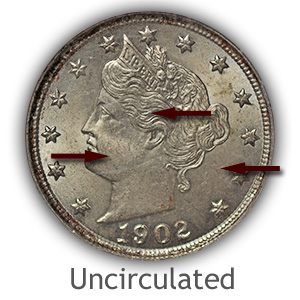
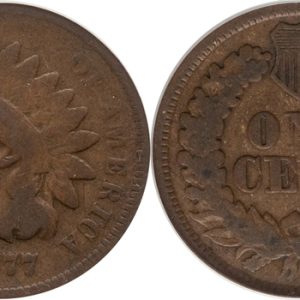
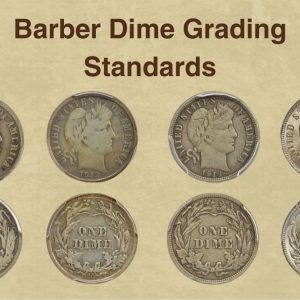
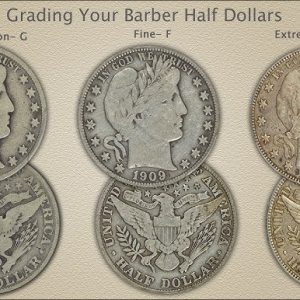
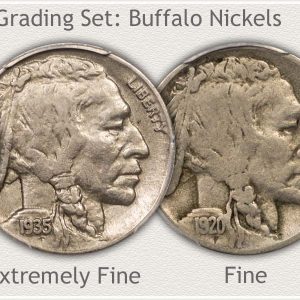
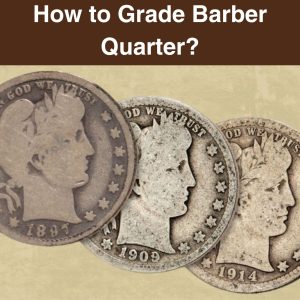
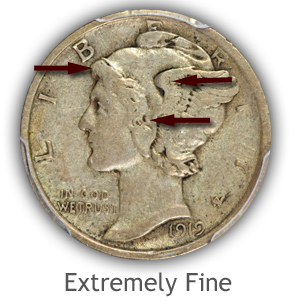

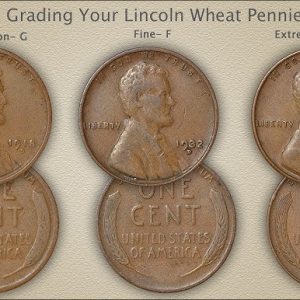
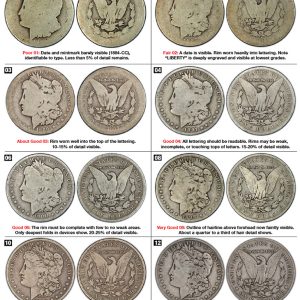
How do I identify a rare Franklin half?
Uncirculated Franklin half dollars with complete horizontal lines on the Liberty Bell are exceptionally scarce and highly prized by collectors. These Full Bell Line (FBL) designations create dramatic value premiums across the series.
How to grade a half dollar coin?
On the reverse. The high points are noticeable on the eagle’s neck the back portion of the eagle’s. Head. And the center tail feather and the center arrow the eagle is holding in his left talon.
What is the difference between a 1956 Franklin Half Dollar type 1 and type 2?
 The main difference between the 1956 Type 1 and Type 2 Franklin half dollar is the design of the eagle on the reverse: `Type 1 has four feathers to the left of the perch, while Type 2 has only three`.The Type 2 also features a more sharply defined and detailed eagle design, including the neck, legs, and wing feathers.The Type 1 is much…
What makes a Franklin Half Dollar valuable?
The Franklin Half Dollar is also a fifty cent piece, making it different than many other coins available with face values of $1, $5 or more. In addition to the coin’s face value, these coins are also valued based on their silver content. This coin was minted from 90 percent pure silver with a reeded edge.